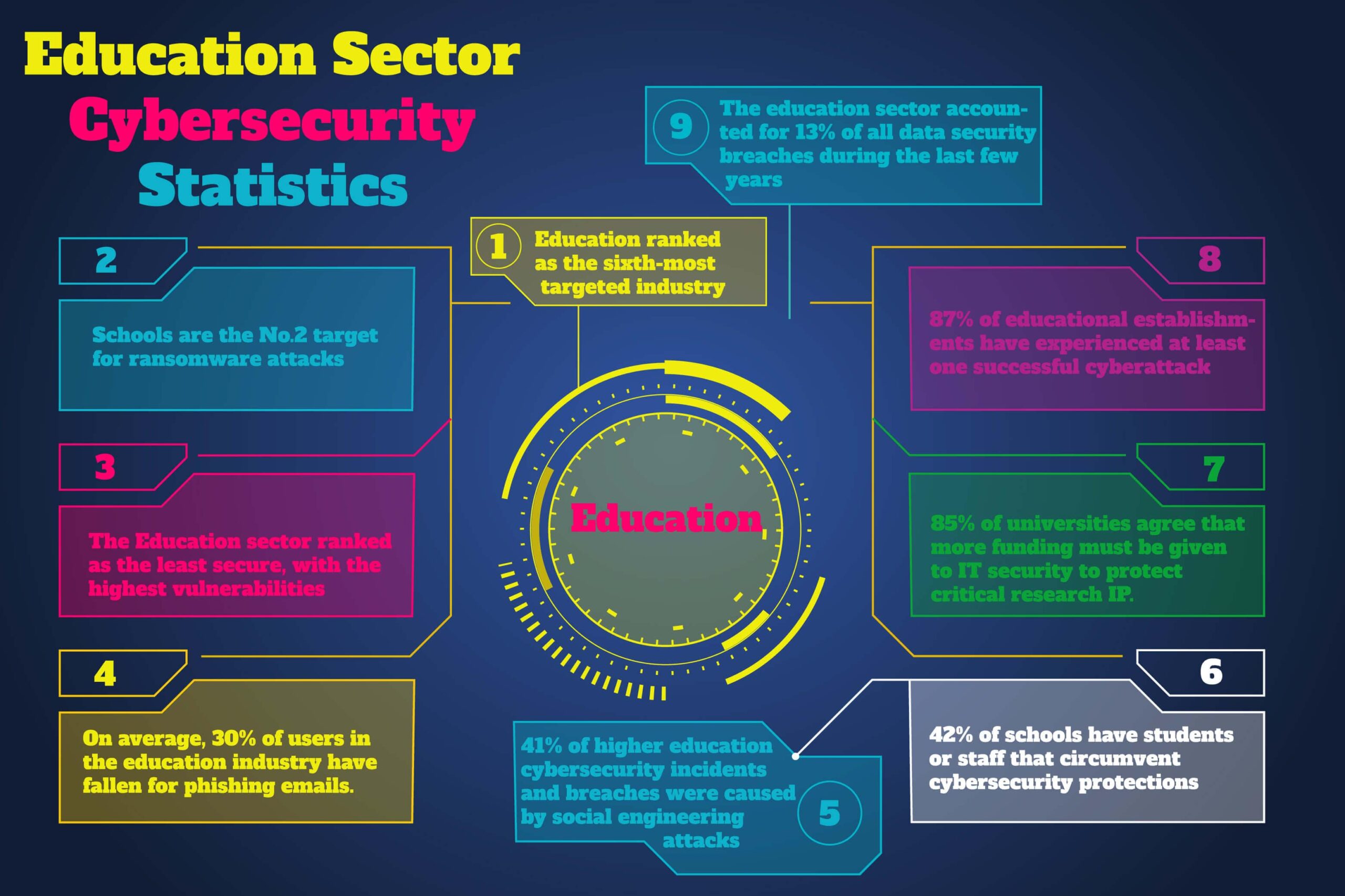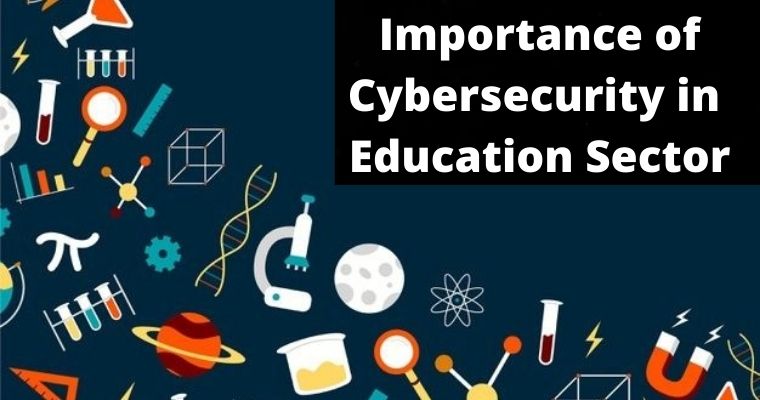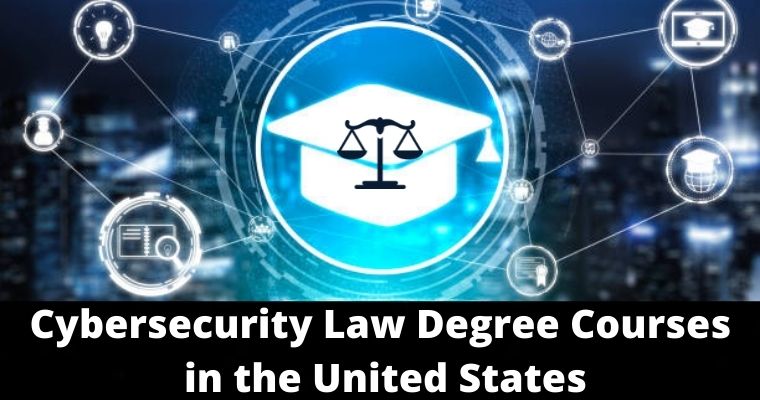Education institutions are susceptible to cybersecurity threats mostly because of the number of devices they manage, the diversity in operating systems, etc.
However, all is not lost. Cybersecurity is an important subject for everyone, not just corporations. It’s also vital for our children to understand how to stay safe online, and the need to be aware of any dangers that might come their way.
As a new year is upon us, it’s time to start fresh but also cautions against the need for cyber security.
Cybersecurity experts from MyAssignmentLab have recommended that all education institutions establish a cybersecurity team of their own, as well as implement some key best practices to ensure safety and privacy.
Data security is a crucial issue for all education sectors. This article talks about the importance of cyber security in educational institutions and how they can be more careful when it comes to protecting sensitive information.
The state of North Dakota in the United States is the first state to teach cybersecurity and computer science in public schools. The elected Governor Mr. Doug Burgum signed the new law on March 24, 2023.
North Dakota School Superintendent Kirsten Baesler at the signing ceremony said that the state aims to integrate and underscore the importance of computer science and cybersecurity instruction in K-12 schools.
Table of Contents
Why is Cybersecurity Important in Education?
The importance of cybersecurity in Educational Institutions is ever-increasing. The development of computers and the internet has made life easier for people in educational institutions as well as in other institutions.
It has also given an opportunity for educational institutions to be more effective and efficient in their operations.
However, it is also a fact that the same technology that makes life easier for people can also make their lives miserable if it is misused.
The internet and computers have become an essential part of our everyday life, no matter whether we are working or studying at home or at school or college or even at the workplace.
It is therefore essential to keep the computers secure from hackers so that the personal information of students, staff members and teachers is not misused by unscrupulous people who might be interested in acquiring confidential information about students/staff/teachers without their knowledge so as to use it against them later on.
The importance of cybersecurity in educational institutions cannot be over-emphasized because information technology is playing a vital role in educational institutions.
10 Key Points Highlighting the Significance of Cybersecurity in Education

Data Protection
- Educational institutions store a vast amount of sensitive data, including student records, financial information, and research data. Cybersecurity safeguards this data from theft, leaks, or unauthorized access.
Privacy Preservation
- Protecting the privacy of students and staff is paramount. Cybersecurity measures ensure that personal information remains confidential and is not exploited by cybercriminals.
Intellectual Property
- Educational organizations often produce valuable intellectual property, including research findings and proprietary educational materials. Theft or plagiarism can be prevented by emloying cybersecurity tools.
Operational Continuity
- Advanced persistent threats can disrupt essential educational services and activities. A robust cybersecurity strategy assist in maintaining operational continuity, ensuring that classes and administrative functions can proceed uninterrupted.
Financial Stability
- Cyberattacks can lead to financial losses through fraud, extortion, or legal liabilities. Protecting against cyber threats helps maintain the financial stability of educational institutions.
Reputation Management
- Data breaches and security incidents can damage an institution’s reputation, making it less attractive to students, faculty, and donors. Effective cybersecurity helps maintain a positive image.
Compliance Requirements
- Many educational institutions must adhere to data protection regulations, such as GDPR or HIPAA, depending on the nature of the data they handle. Cybersecurity measures ensure compliance with these laws.
Phishing and Social Engineering
- Educational institutions are frequent targets of social engineering or phishing attacks. Cybersecurity awareness and training can help staff and students recognize and mitigate these threats.
Remote Learning
- With the growth of online and remote learning, cybersecurity becomes even more critical. Protecting online learning platforms and data transmission is essential for the educational process.
Cyber Skills Development
- Teaching students about cybersecurity and providing hands-on experience can prepare them for a rapidly evolving job market. Educating the next generation of cybersecurity professionals is crucial for overall cybersecurity resilience.
Types of Cybersecurity Threats in Educational Institutions
The major types of cyber security threats in education institutions include phishing, malware, ransomware, spam, social engineering and denial of service attacks. Cybercriminals are using these means to target educational institutions for financial gain.
Phishing is the most common form of cyber-attack used by cybercriminals to hack into the systems of educational institutions.
Phishing is a fraudulent email or website that aims to collect sensitive information such as passwords, credit card numbers and other personal information from the user if they fall into their trap.
Phishing emails often appear as official notifications from a well-known company requesting users to update their personal or banking details by clicking on a link or downloading a document or an attachment that will infect their system with malware.
The other way phishers can try to get access to your system is by installing malware on your computer. Malware is a program or files that infect your system and can steal your sensitive information.
Ransomware is a form of malware that encrypts the files of a user’s computer and demands a ransom in exchange for the decryption key to unlock their files.
Ransomware attacks are distributed through phishing emails and infected websites. Once it infects your system, ransomware will encrypt all your files and demand you to pay a certain amount of money to unlock them.
Spam is another way cybercriminals can gain access to your system by sending out spam emails with malicious links or attachments.
Spam emails often look like an official notification from an educational institution or company asking users to update their personal information by clicking on the link or downloading the attachment which will infect their system with malware and viruses if they fall into the trap.
Spam emails are also used by cybercriminals to spread viruses and other forms of malware through infected files attached to spam email messages.
List of Cybersecurity Challenges in the Education Sector
Cyber threats are of various natures and they are on the rise. Some of the cyber threats that affect the education sector include:
Unsecured wireless connections: The use of wireless connections has become very common in today’s world. However, there is a need to secure these wireless connections.
Unsecured wireless connections can be easily hacked by hackers and it may lead to data theft and data breaches.
Wireless routers: Many schools do not take care of their wireless routers or they do not install any firewall on their routers which makes them vulnerable to cyber attacks from outside hackers or even inside employees who have been assigned the task of managing the school’s network infrastructure.
This also leads to data breaches as well as data theft. Social media: Social media has become very popular among students and teachers alike.
However, there is a need to restrict access to sites such as Facebook and Twitter during working hours so that students can concentrate better on their studies and teachers can focus on teaching rather than surfing the web or checking out Facebook posts.
What is Cybersecurity Awareness for Students?
Cybersecurity is a burgeoning field in the world of education. With so many students accessing the internet on a daily basis, there are many opportunities for cybercriminals to steal passwords or personal information.
Cybersecurity awareness training is important because it teaches students how they can protect themselves from cyber-attacks. Students will learn about phishing scams, malware, ransomware, and other computer threats.
This is absolutely necessary for schools to keep students safe. Schools need to protect themselves from hackers by installing firewalls, malware protection, and other protections.
The school needs to make sure that all the devices connected to their Wi-Fi network are secured with strong passwords.
Educators can teach cyber security in the classroom or parents can teach it at home.
Cybersecurity awareness for students also includes teaching them to be aware of the threats and risks that come with using technology. It also teaches them how to use technology safely and responsibly.
It’s important that children are given a safe way to explore the world without the fear of being attacked online, so programs such as KidsZone have been created to help protect kids from cyberbullying.
Education Sector Cybersecurity Statistics

- Education ranked as the sixth-most targeted industry
- Schools are the no.2 target for ransomware attacks
- The education sector ranked as the least secure, with the highest vulnerabilities
- On average, 30% of users in the education industry have fallen for phishing emails.
- 41% of higher education cybersecurity incidents and breaches were caused by social engineering attacks
- 42% of schools have students or staff that circumvent cybersecurity protections
- 85% of universities agree that more funding must be given to IT security to protect critical research IP.
- 87% of educational establishments have experienced at least one successful cyberattack
- The education sector accounted for 13% of all data security breaches during the last few years.
Sixty percent of data breaches are caused by vulnerabilities that might have been averted if a security update or patch had been deployed.
What are The Cyber Threats For Students?
This is a difficult question to answer definitively, but it may include exposure to malware posing as “fun” or motivational pop-ups that lead to harmful links.
These links are often downloaded by clicking on something that looks like a notification telling you that you have won an exclusive prize–except this link points to expensive unwanted software.
Intelligent & adaptive software is much more dangerous because they are designed in sophisticated networks and populations of specially programmed machines to travel through computers, smartphones, tablets, back-office systems, etc.
Even if educational institutions have the latest technology in cybersecurity software for their learning management system (LMS), social media website, etc., it is not infallible in the face of artificial intelligence in adaptive intelligent software networks.
The students can find detailed information about college identity theft & protection tips
As you know, we are living in a digital world where Identity Theft is widely spread.
There are many types of identity theft, one of them is college identity theft, which is becoming so popular.
Considering the fact, that the current generation of college students is raised with technology, and they use technologies more often than their seniors, they become more vulnerable.
It is important to know, to fight the consequences of identity theft is more difficult, In this case, college students can practice some important habits and steps to Prevent Student Identity Theft.
According to the Overseas Security Advisory Council (OSAC), there is a “kidnapping threat” in parts of Colombia.
Kidnappings can be either ransom kidnaps, which is when perpetrators demand money from the parents and the victim’s family before releasing them, or political kidnaps, which Z&Z Specialists Group describes as “capture and torture,” and tend to be committed by gangs and organized crime groups.
Even U.S. Consulate personnel should exercise heightened alertness while traveling in these areas of Colombia given this generalized information about what could happen
As more than 70% of today’s students use laptops and tablets for their studies, the cyber threats they may be exposed to are on the rise.
Cases of identity theft or computer virus/malware infections by downloading content from unknown sources, students’ accounts on various social media platforms, and more such networks pose a threat to their digital privacy and physical safety (and the information on both).
Corporations and university officials who fully comprehend this impending crisis must take proper action.
One easy way out of this “cyber threat for students” scenario is the use of strong passwords. Young students are often inclined to reuse their passwords or choose simple ones that can be easily guessed.
To protect against this, you’ll need to assign each student a unique password. Educate your staff about potential threats and find creative ways to test passwords if possible.
In a nutshell, Cyber threats pose the greatest risks to students (both personally and academically) in schools.
These threats can also inhibit schools’ ability to educate students by limiting how much digital learning they are able to do. Schools especially need improved cybersecurity in order to be prepared for cybersecurity incidents that come with the digital age.
A solution is having staff members trained on using (and creating) basic cybersecurity practices like keeping all laptops safe, keeping passwords changed regularly, and not connecting school devices – open or otherwise – to any outside networks without necessary precautions.
Why is Cybersecurity Awareness Important?
The Internet has made information widely available to the public at all times, which is both a blessing and a curse. It is crucial for any type of business including educational institutions.
Privacy legislation has defined personal information as an essential asset that can’t be traded or sold without consent. If this information falls into the wrong hands, it can lead to identity theft which creates severe long-term consequences.
When it specifically comes to education, this means that there are plenty of opportunities for students to access course materials online – but also more dangers.
Cybersecurity awareness is of paramount importance because it can help us identify potential threats before they happen. It also provides us with the knowledge necessary to protect ourselves from malicious sites or attacks.
Owing to that, it is the only way to protect educational institutions from cyber threats. One of the most important aspects of protecting an institution against cyber attacks is awareness, so students and staff members know what they need to do to protect themselves.
Cybersecurity awareness programs should be mandatory in schools so that everyone can learn how to stay safe online. The majority of hackers are motivated by the challenge and not the financial reward.
If a hacker can get your attention, they can get into your system. There are also terrorist groups that hack for ideological reasons.
These groups have been known to target or at least show interest in schools and colleges. By being aware of how hackers work, you can avoid their traps and protect your data from them.
When it comes to cyber threats, what you don’t know CAN hurt you. Schools are one of the most vulnerable targets for cyber-attacks because they have large networks of computers and often don’t enforce necessary protocols.
Education institutions need to enforce stricter policies in order to ensure student safety.
Educating yourself and your staff on the dangers of malware, phishing scams, ransomware attacks, and more gives you the knowledge and tools needed to avoid becoming another cybercrime statistic.
The Key Takeaways
Everyone enrolled and on faculty in educational settings has access to new learning options. However, many of these organizations are vulnerable to cyber assaults.
With the worldwide epidemic allowing hackers plenty of time to build new schemes and malicious malware, education is the key to dealing with the fast-changing danger landscape.
Security awareness training should be at the center of your defensive plan to secure your data.
Proactive security awareness training will tell participants about the strategies that cyber thieves are now employing and will educate them on best practices for protecting their information and systems.


